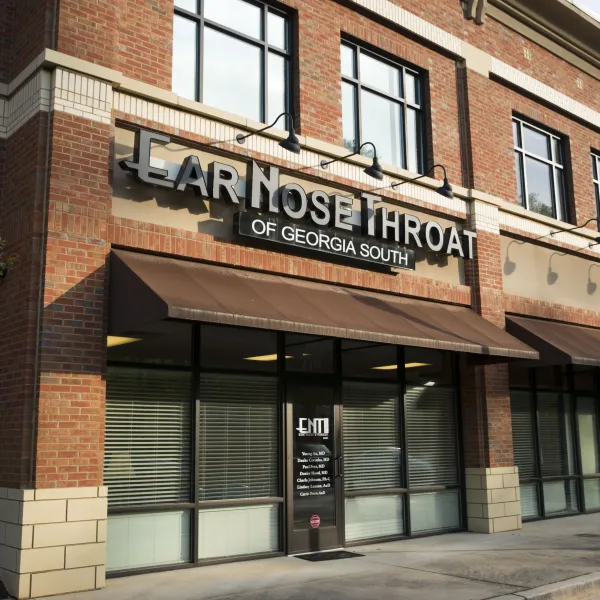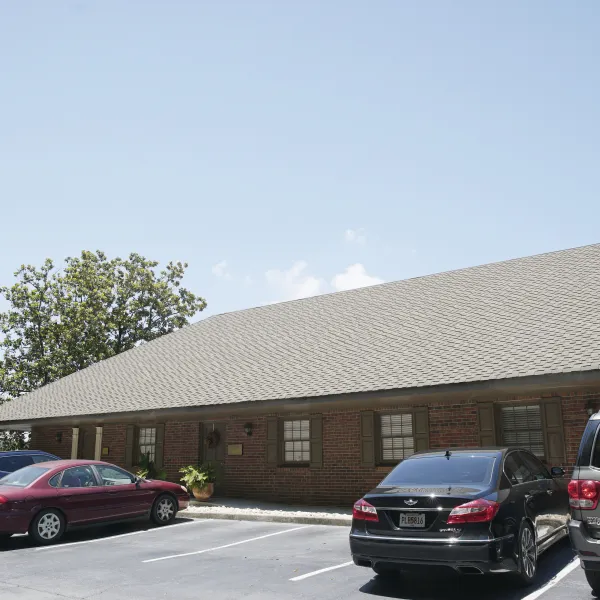
Nosebleeds

Nosebleeds
A nosebleed, also known as epistaxis, is due to the bursting of a blood vessel within the nose. While about 60 percent of people will have a nosebleed at some point in their life, most nosebleeds are not life threatening and will usually stop on their own. While the sight of a nosebleed can be alarming, only about 6 percent of nosebleeds require professional medical attention. If your nosebleeds are frequent, last longer than 30 minutes even with compression or interfere with breathing, make an appointment with one of ENT of Georgia South’s expert otolaryngologists for diagnosis and treatment.
When to Call the Doctor or
Go to a Hospital Emergency Room
- IF bleeding cannot be stopped or keeps reappearing.
- IF bleeding is rapid or if blood loss is large.
- IF you feel weak or faint, presumably from blood loss.
- IF bleeding begins by going down the back of the throat rather than the front of the nose.
Care &
Prevention
Most nosebleeds are mere nuisances, but some are quite frightening, and a few are even life-threatening. Physicians classify nosebleeds into two different types.
- Anterior Nosebleed: The nosebleed that comes from the front part of the nose and begins with a flow of blood out one or the other nostril if the patient is sitting up or standing
- Posterior Nosebleed: The nosebleed that comes from deep in the nose and flows down the back of the mouth and throat even if the patient is sitting up or standing.
Obviously, if the patient is lying down, even the anterior nosebleeds seem to flow in both directions, especially if the patient is coughing or blowing his nose.
Nevertheless, it is important to try to make the distinction since posterior nosebleeds are often more severe and almost always require the physician's care. Posterior nosebleeds are more likely to occur in older people, persons with high blood pressure, and in cases of injury to the nose or face.
Nosebleeds in children are almost always of the anterior type. Anterior nosebleeds are common in dry climates or during the winter months when the dry air parches the nasal membranes so that they crust, crack, and bleed. This can be prevented if you will place a bit of lubricating cream or ointment about the size of a pea on the end of your fingertip and then rub it up inside the nose, especially on the middle portion (the septum).
Many physicians suggest any of the following lubricating creams or ointments. They can all be purchased without a prescription: Borofax ointment®, A and D Ointment®, Mentholatum®, Vicks Vaporub®, and Vaseline®. Up to three applications a day may be needed, but usually every night at bedtime is enough.
If the nosebleeds persist, you should see your doctor, who may recommend cautery to the blood vessel that is causing the trouble.
To Stop An
Anterior Nosebleed
If you or your child has an anterior nosebleed, you may be able to care for it yourself using the following steps:
- Pinch all the soft parts of the nose together between your thumb and two fingers.
- Press firmly toward the face compressing the pinched parts of the nose against the bones of the face.
- Hold it for 5 minutes (timed by a clock).
- Keep head higher than the level of the heart-sit up or lie with head elevated.
- Apply ice (crushed in a plastic bag or washcloth) to nose and cheeks.

To Prevent Rebleeding
After Bleeding Has Stopped
- Do not pick or blow nose (sniffing is all right).
- Do not strain or bend down to lift anything heavy.
- Keep head higher than the level of the heart.
If Rebleeding Occurs
- Clear nose of all blood clots by sniffing in forcefully.
- Spray nose four times on both sides with decongestant spray (such as Afrin®, Duration®, Neo-Synephrine®, etc.)
- Pinch and press nose into face again, as in steps 1-3 above.
- Call doctor.
Our Convenient
Office Locations



Buckhead
1218 W Paces Ferry Rd NW
UNIT 208
Atlanta, GA 30327
Monday - Thursday 8am - 4:30pm
Friday - 8am-2:30pm






